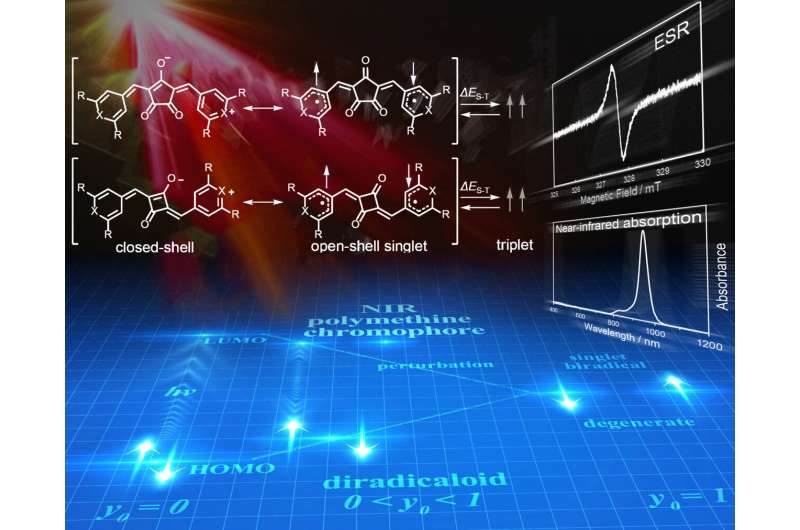This article has been reviewed according to Science X's editorial process and policies. Editors have highlighted the following attributes while ensuring the content's credibility:
fact-checked
peer-reviewed publication
trusted source
proofread
Proper electronic structure of near-infrared absorbing functional dyes discovered

Near-infrared light, whose wavelength is longer than visible light, is invisible and can pass through many substances. Organic materials that efficiently absorb near-infrared light are essential for technological innovations that utilize near-infrared light, such as the dyes in the infrared blocking filters of smartphone cameras and security inks. These and many more technical applications make developing new dyes that can absorb longer wavelengths of near-infrared light desirable.
Previously, near-infrared absorbing organic materials were treated as closed-shell molecules without unpaired electrons. However, a joint research group led by Associate Professor Takeshi Maeda, Assistant Professor Daisuke Sakamaki, and Professor Hideki Fujiwara from Osaka Metropolitan University discovered that near-infrared absorbing oxocarbon-based dyes have an intermediate state between closed-shell and open-shell electronic configurations. They also found that as the wavelengths of near-infrared light absorbed increase, so does the contribution of open-shell forms in the dye.
Their research results were published in Chemical Science on January 16, 2023.
"We have clarified the proper electronic structure of near-infrared absorbing oxocarbon-based dyes that are regarded as pure closed-shell molecules. We hope that this will lead to advances in the molecular design, properties, functions, and applications of near-infrared absorbing dyes and to the development of new near-infrared absorbing organic materials that be used in society," Professor Takeshi Maeda said.
More information: Takeshi Maeda et al, Unveiling a new aspect of oxocarbons: open-shell character of 4- and 5-membered oxocarbon derivatives showing near-infrared absorption, Chemical Science (2023). DOI: 10.1039/D2SC06612B
Journal information: Chemical Science
Provided by Osaka Metropolitan University





















